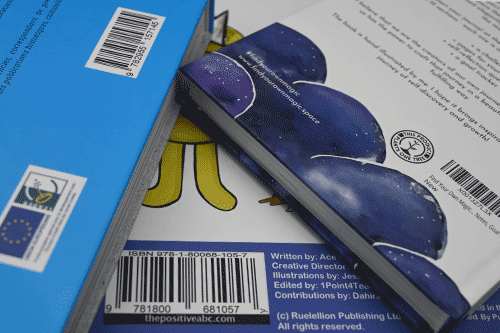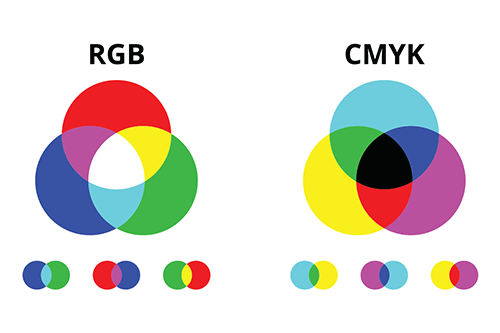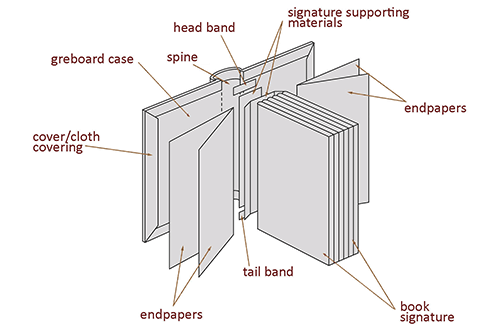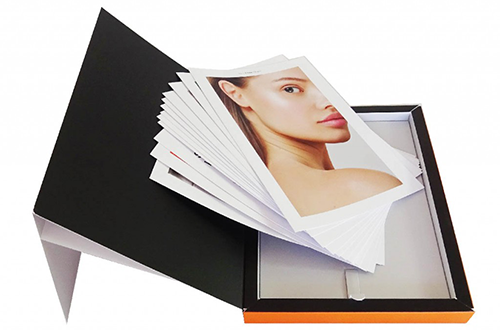Is your first novel or non-fiction book finished, edited, proofread and ready for publication? Or are you a professional fiction and non-fiction publisher? Pulsio Print would like to share with you all our experience: along with the ABCs of printing fiction and non-fiction, we would like to give away the secrets of how to print with ease in this 10-minute read.

The choice of paper for the interior
Fiction and non-fiction printing is done with black ink on white or ivory paper.
Bulky paper
The classic paper for printing fiction and general non-fiction is bulky paper. It is used 90% of the time. Designed specifically for novel printing, this type of paper has an exceptional volume, giving your book thickness, which is very important for shorter texts, or lightness, which is necessary for longer texts. It has a high ink absorption capacity, which is why it is often preferred in mono printing. This paper can be called ‘bulky’, ‘bookwove’ or ‘uncoated’.
Bulky paper comes in various shades and qualities. If the book is illustrated, we recommend using premium paper with more weight.
Premium Bulky Paper
Salzer / EOS / Premium Extra White or Premium Blue White / Lake 2000 / Lac 3000: these are different names for the same paper. It’s a peculiarity of manufacturers and paper distributors that they refer to one and the same thing by different names.
Made in the Salzer factory in Austria, the oldest paper mill in Europe, it is characterized by a unique feel and touch, a very good opacity and high volume (up to 2.0). There is no trace of wood. It is available in two colours: “special extra white” (white) and “special blue white” (ivory), commercially called “premium extra white” and “premium ivory”.
Alizé paper by Vizille’s paper factory is wood free and is FSC or PEFC certified. This paper combines high printability and exceptional runnability. It comes in two shades: white and gold (natural). With a volume of 2.0 and paper weight from 55 to 150 g / m², this paper is an excellent choice for novel printing.
The high quality bulky paper, a step below the “premium”
Munken Print: Munken Print combines the most interesting properties of paper with and without wood contents. This paper’s volume, surface, strength, reading comfort and printability are optimized for novels and non-fiction. It is available in a wide range of volumes and weights to be used for both book covers and interiors of the same quality. There are also two versions of it: Munken Print Cream with creamy hue and Munken Print White with natural whiteness.
Stora Enso papers (Creamy, Lux/Belle, Classic…): made in Scandinavia, they are of an exceptional quality, and are adapted to the needs of fiction and non-fiction printing, yet illustrations print out beautifully as well. Creamy: its natural creamy colour and specially designed weights (40, 50, 55 lbs) are intended for text printing, especially lengthy books. Classic: of a rather white hue and quite neutral, this paper has good opacity and its volume of 2.0 makes it a preferred choice not only for texts but also for illustrations with deep/rich black (Manga for example). Lux/Belle: its ivory hue, volume of 2.0 and its opacity make it particularly suitable paper for shorter-length paperbacks.
Quality natural bulky papers
The Helefoss paper produced in Sweden has a very authentic look, both in terms of its texture and hue. It is suitable for printing trade paperbacks or pocket books if you are looking for a more economical manufacturing cost.
To make up your mind and choose among the various paper rates, colours and qualities, we provide a table below. It will give you an overview that will help make an easier choice. The price indices indicate the change in the total cost of a 196-page B & W book, A5 format, 1,000 copies, depending on the paper used.
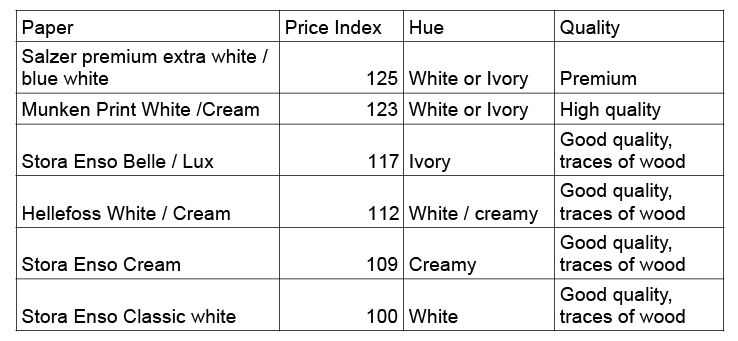
* Variation in the price of the final product (printed book) according to the paper used.
** The more wood the paper contains, the more it will tend to become yellow over time or after prolonged exposure to sunlight.
Offset papers
The use of offset paper is necessary if the extent of the book is quite long and the book dimensions are threatened to become disproportionate because of the book spine getting too big. You must also take into account the technical limitations of gluing machines, in the maximum spine width can be up to 60 mm. This means that the maximum extent of your novel can be 600 pages if you use 55 lbs paper with volume of 2.0. If your work is larger, then you must either reduce the weight and the volume of the paper stock, or print it in two volumes, or switch to offset paper.
If the bulky paper is usually offered in volume of 2.0, the offset is on average with a volume of 1.25. This gives you about twice as less volume for the same weight. You can then print a novel of 1000 pages on 55 lbs offset paper and stay in the technical limits of 50 mm. But the choice of offset can be dictated by aesthetic reasons and personal preferences, especially when we do not want to get a thick book at all costs.
Offset paper is generally used in white, but it can be tinted ivory or cream to give more character and originality to your novels. Offset paper appears in multiple colours: pink, orange, red, black, green, yellow, offered at high prices and used for specific projects.
Several European, Asian and worldwide manufacturers offer offset paper. Here is a selection:
Maestro, IQ-print, Mondi: three names for the same paper (due to the marketing choices of the paper manufacturer). Maestro is a popular paper name and widely used for its excellent value for money. It is made in Italy. Note that its volume is slightly higher than the rest of the offset – 1.3 – and has a really slight natural yellow tint, unlike other offset which are white or bluish white.
Fabriano Fedrigoni, Arcoset (two names, one paper): this is the paper of the Italian manufacturer Fabriano. Unlike Maestro, it has a volume of 1.25 and its shade is whiter. Made from cellulose ECF, it is acid free from alkaline reserve guaranteed for long-term preservation.
Amber graphic: Offset, extra white, uncoated wood, this paper is designed for printing books, dictionaries, manuals, brochures and catalogues. Its whiteness favours print contrast, thus texts and illustrations are reproduced with perfect quality.
Ivory tinted offset
Fedrigoni Palatina: Palatina paper is a Fedrigoni product, satin upper quality offset. Its ivory hue and excellent opacity make it a favourite paper of publishers. Smooth and opaque, it is ideal for perfect prints with excellent ink rendering.
Olin: Antalis’s Olin range offers you very good volume, excellent opacity and perfect quality.
It is represented by the three varieties: Premium Olin Smooth offset paper, available in 5 shades of white and 15 weights; Olin Regular vellum paper available in 3 shades of white and 10 weights – its whiteness will allow you to give more volume and strength to your works; Olin Rough offset paper – very natural to the touch and ensuring a perfect runnability, available in 3 different shades of white and 15 weights.
Recycled papers
If you want to give a green touch to your novel and especially if the subject is suitable, you can use recycled paper. These are offset-like papers, of a higher price and a more grayish hue.
Cyclus Recycled Paper: Made from 100% recycled fibres, this paper is essential if your project demands as environmentally-friendly an approach as possible. It will be in perfect harmony with your goals thanks to its authentic textures and natural colours and tones.
Art Papers: rarely used for printing novels, these creative papers allow you to highlight your special message thanks to their feel and appearance. They will help you present to the reader in a unique way books that are accompanied by graphic art and photography. Often, the illustrations that accompany such a work are printed as one or more inserts. This allows you to combine different types of paper. In such a case, the technical and artistic assistance of a Pulsio Print adviser would prove invaluable.
The coated papers: rarely used for fiction or general non-fiction and only if this is the specific wish of the author or the publisher.
Paper for inserts
Although coated paper is rarely used for printing novel text, it is very often used for printing inserts, usually photographs or other pictures, both colour and black and white images. If the coated paper is white, the bulky or offset paper for the text is often also chosen to be white. If your choice is ivory/cream, then it is always possible to print the insert on an ivory-tinted background to keep an overall coherence. The grammage of the paper for the inserts is freely chosen from 60 to 115 lbs.
For any advice about choice of paper, do not hesitate to ask our team of experts. If you want to find the paper of your choice, please refer to the “Samples” section on our website.
Trim size
Fiction or non-fiction trim sizes can take any parameters, freely chosen by the client. They are expressed in two units of measurement – centimeters or millimeters – which designate the size of the closed book (fore example 14.5 x 21.0 or 145 x 210). While you can choose whatever trim size you want, it is best to optimize the size of the book according
The most popular formats for novels and general non-fiction are 12.9 x 19.8 mm, 14 x 21 cm and 16 x 24 cm. They offer a pleasant reading experience and are easy on the eye and in the hand for the reader. Note that we always write the dimension of the width or base of the book at the beginning and then the height: 14W x 21H. This makes it possible
Not to confuse a portrait format with a landscape format, where both can have the same dimensions, 14 x 21 or 21 x 14. Other less typical formats are 12 x 18; 13 x 21; 15.5 × 23.
It is interesting to note that it is usually desirable to keep the dimensions of the book to an attractive proportion, as for example a continuation of the Fibonacci sequence and in accordance to the golden ratio 1:61 (ratio between the base to the height). But if a certain artistic take asks for it, and you are looking for originality, you can choose any trim size within the technical limits of the machines.
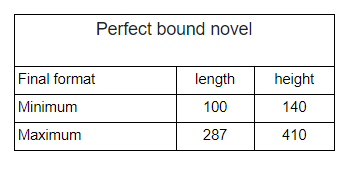
Cover
In a shop window book display or at a book fair, it is the cover that creates the first impression. Its job is to arouse the reader’s interest and entice them to look further, beginning the process that triggers a sale. Both the graphics (colours, artwork, style) and the text (font face, size, positioning, title text) have a role to play in attracting the potential reader. There are no hard and fast rules, but below are some recommendations.
For the cover’s text display, fonts that are too exotic or illegible have a negative effect. Each professional display font is carefully created to have a specific effect, and should be chosen carefully; too many different font faces look wrong, one or two at most will work best. Too many background images can ‘kill’ other information on the cover;
do not make the most of all the possibilities of filters and effects offered by contemporary image processing tools (Photoshop or others), and don’t clutter the image space, but of course also avoid banality. Finally, the most important thing is that the cover style corresponds to the subject of the book.
You can use either a standard paper, called ‘one side art board’ because it is treated on the outside to keep the board rigid, or a ‘two side art board’ if you want more flexibility in the cover or if there is printing on the inside of the cover as well. A third option would be art paper or structured paper such as Olin, Rives, Curious Antalis collection and others. On the cover you can choose the application of a simple varnish when it is a paper which is already structured, or various filming (matt, brilliant, selective, volume, soft touch, anti-scratch) and special effects
that you can find on the section “Standard Finishes and Special Effects” on our website.
Finally, to achieve the best possible cover, the technical aspect of the preparation of files is also important. Here is our guide on this subject: “Recommendation for the preparation of files“.
Hardcover (hardback)
Historically, all book covers were rigid. According to publishing traditions in some countries (especially English speaking), the cover of the first edition of a book is always hardback. The use of hardcover has its practical side – a book with a hardcover lasts longer and is more resistant to external damage. It is also more pleasant to the touch.
Today, when the circulation of a book from person to person is less common and reading physical books is being slowly replaced by
electronic media, the added value of a hardback edition is that it is high-class, more professional-looking, more traditional, and it gives the impression of high quality.
The types of hardcover according to the dressing of the board are paper wrapping, cloth/leather covering and mixed covering (canvas and paper). Note also that special effects and other finishes can apply to hardcovers.
Soft cover perfect bound, PUR bound or stitched paperback
This is the traditional binding, and the most common one for printing novels and general non-fiction. The cover is called ‘paperback’ because of its maximum weight, up to 350 g/m2 one side art board or 400 g/m2 two side art board.
Added French flaps for a soft cover can add attraction value to a book, carry additional information about the author and the content, and also serve as a kind of bridge between the colour cover and the interior black and white. The recommended weight for covers with flaps is 160/170 lbs and not exceeding 200 lbs. The addition of flaps increases the price of about an extra 0.34 USD/copy.
The Binding
Standard perfect bound
This is the binding method that sticks the different gatherings of pages of the book, assembled in several ‘notebooks’, to the cover with the use of hot glue.
PUR binding
PUR binding is the same process as perfect binding but with a specific polyurethane glue. It allows sticking together qualitatively thick books, especially if coated paper is used for the pages and in cases when the paperweight is greater than 80 lbs regardless of their thickness.
Section sewn/Sewn
This binding method is used when there is a large number of page gatherings in the book. In this case, they are sewn in addition to being glued. Even though in modern times PUR glue can replace stitching, the more elegant appearance of a sewn book with only a slightly higher price make this an excellent option.
On the basis of a book of 196 pages B & W, A5 format, 1000 copies, here are the variations on the final price:
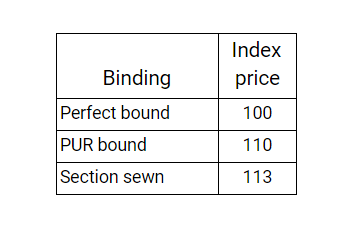
You can read more about binding on the “Book Binding” page.
Finishes
The purpose of applying certain cover finishes (film coating, varnishes, etc.) is not just to make your monochromatic book stand out from the rest. Finishes often play a purely utilitarian role. The film coating protects or serves as a support for other embellishments such as selective varnishes or volume (raised) UV; UV or machine varnish will
protect an artistic paper or craft cover whose surface is fragile and may be stained. Canvas dressing in hardcover can’t be printed, the only way to add an effect is to use embossing, debossing, hot stamping or screen
printing.
Other elements can complete the appearance of your novel: add a dust jacket to the hardcover, a head and tails band, a banderol or single book foil wrapping, a bookmark, a lace bookmark (in the hardcover edition)…
The following table will give you some guidelines depending on your budget and wishes:
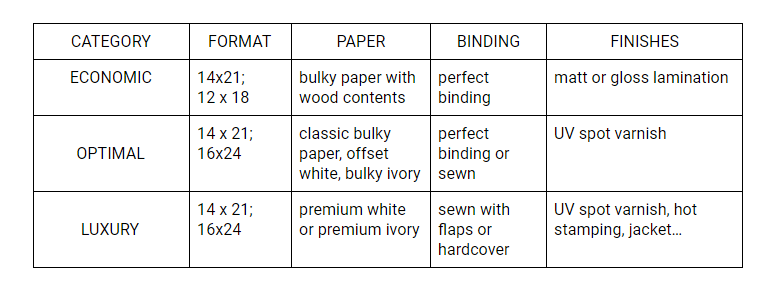
Pulsio Print advisors will be happy to assist you with all stages of the process, from the design of your book to the final creation of a beautiful object as rich in physical form as it is in content.
Check our price: it’s free and it only takes seconds!
